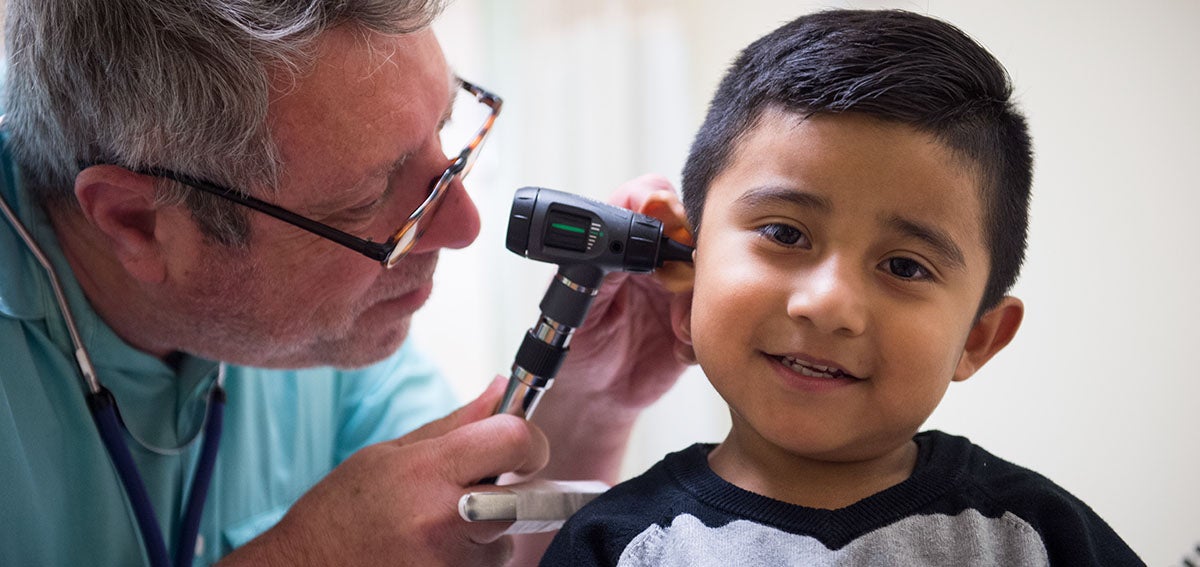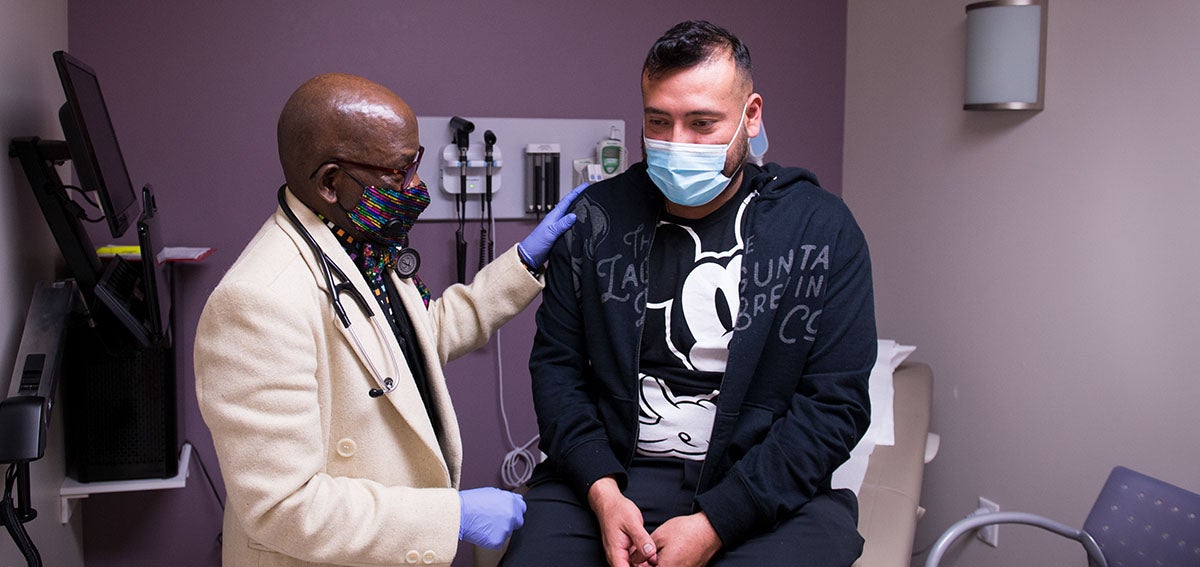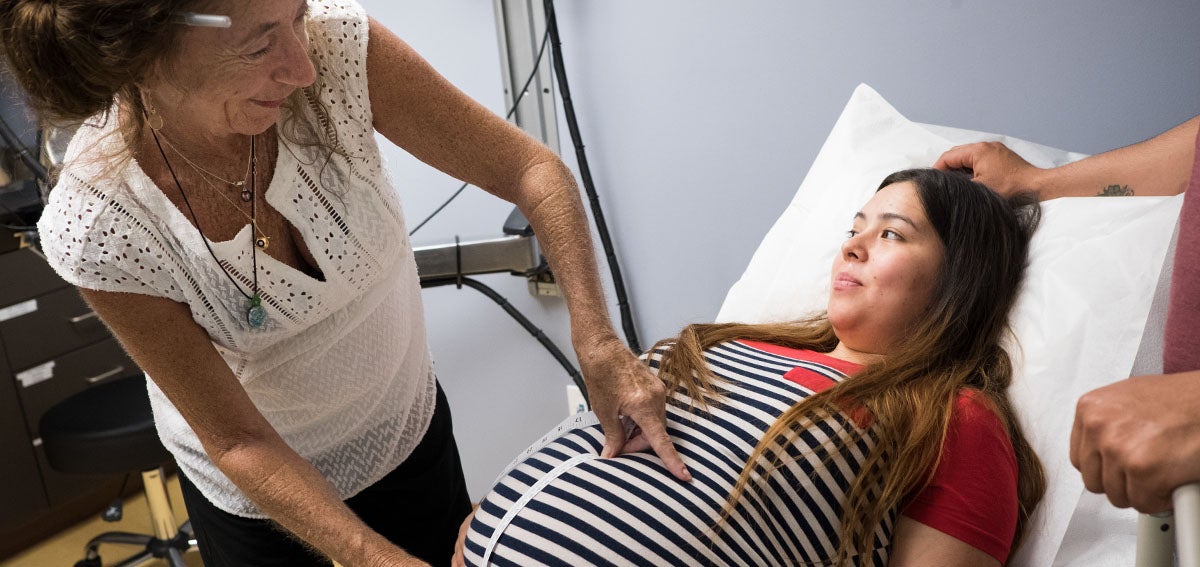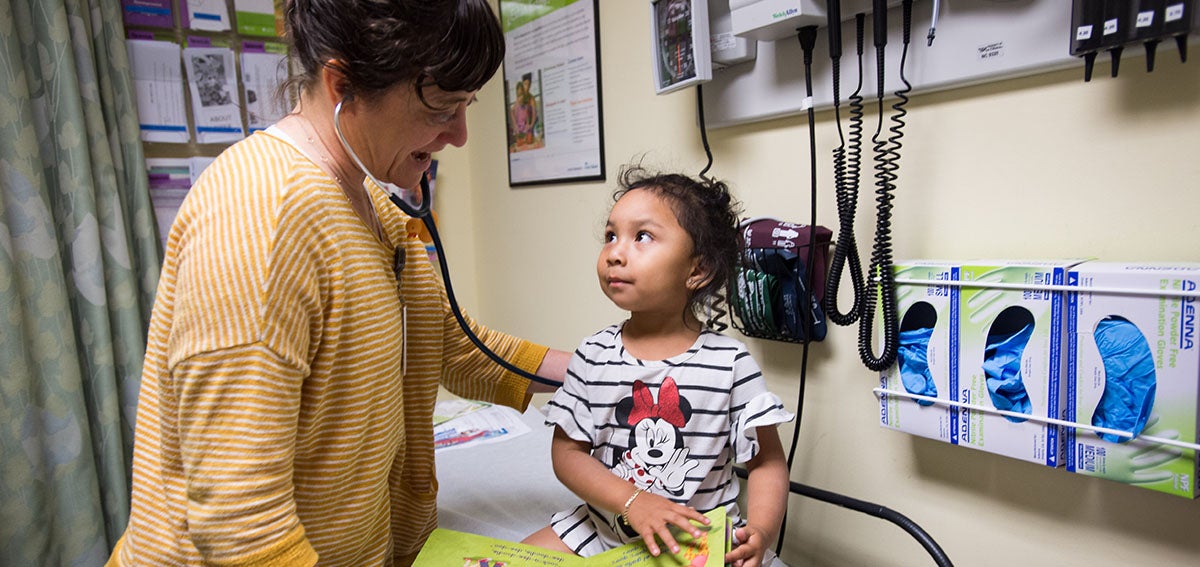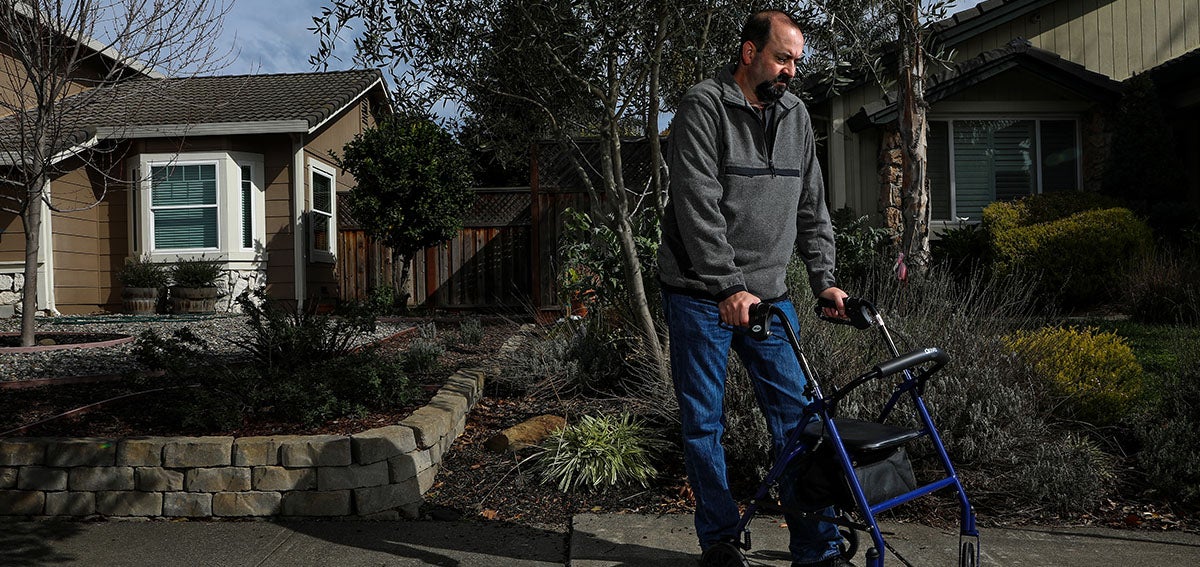
Lauren Nichols fell ill with COVID-19 on March 10, 2020 — and like many other people who contracted SARS-CoV-2, she stayed sick for a long time. “When we spoke on day 150, she was on her fifth month of gastrointestinal problems and severe morning nausea,” reporter Ed Yong wrote in The Atlantic. “She still has extreme fatigue, bulging veins, excessive bruising, an erratic heartbeat, short-term memory loss, gynecological problems, sensitivity to light and sounds, and brain fog.”

These symptoms are some of the many experienced by people living with the misery of so-called “long COVID”: fatigue, headaches, trouble sleeping, cognitive difficulty, racing pulse, and heart palpitations. “Who they are and how many of them remain ill after a SARS-CoV-2 infection are unknown,” writes Melissa Healy of the Los Angeles Times. “What drives their bizarre array of symptoms is, as yet, unexplained. Their prognoses remain uncertain. And so is the answer to the most pressing question: How can they be helped?”
Long COVID is distinct from an acute COVID-19 infection. In the acute phase of COVID-19, the immune system fights off the virus. Symptoms can range from mild to severe to nonexistent. COVID-19 has been remarkable for the number of people who are completely asymptomatic during an infection, but those people are not immune from long COVID.
In long COVID, the acute phase of the illness ends but debilitating symptoms either begin or continue. Between 10% and 30% of people infected with SARS-CoV-2 suffer from long COVID, writes Meghan O’Rourke of The Atlantic. That range suggests how little is known about the postviral syndrome. Doctors began noticing long COVID symptoms in the early days of the pandemic, and the US Centers for Disease Control and Prevention acknowledged the existence of long COVID in July 2020, Tanya Basu reported in MIT Technology Review. Yet the National Institutes of Health (NIH) did not receive funding for research into the syndrome until 2021.
With the development and distribution of several vaccines, the end of the pandemic is in sight. But a new public health crisis of long COVID may be just beginning.
Puzzling Symptoms
Dr. David Putrino, the director of rehabilitation innovation at Mount Sinai Health System in New York City, started to see patients who weren’t getting better last May, he said during the panel discussion “Covering Coronavirus: The Long Covid Nightmare,” hosted by the Center for Health Journalism at the University of Southern California. When the acute phase of the illness ended, puzzling symptoms continued or emerged anew.
“They were having persistent symptoms, such as shortness of breath and headaches and chest pain. And then they were developing new symptoms like extreme fatigue, exercise intolerance, cognitive issues, difficulties such as short-term memory loss, difficulty concentrating,” he said. “This was where we started to suspect that what we were seeing was a post-viral syndrome.”
Recent research has suggested that a stunning number of people who were infected by SARS-CoV-2 may have long COVID. According to a research letter published in February by the Journal of the American Medical Association, “Persistent symptoms were reported by one-third of COVID-19 outpatients.”
“My goodness, the economic implications of this. You’re talking a huge number of 20- to 40-year-olds — our workforce — who now can’t work.”
—Dayna McCarthy, rehabilitation medicine physician
Long COVID affects a wide range of people, including those who were very fit before their illness, Healy wrote in the Los Angeles Times. “Athletes and fitness buffs who scarcely noticed they were ill find that, months later, they can no longer exercise due to heart palpitations, grinding fatigue, and muscle weakness.”
This month, a study that analyzed electronic medical records in California found that nearly one-third of people struggling with long COVID symptoms — like shortness of breath, cough, and abdominal pain — had no signs of illness in the first 10 days after testing positive for the coronavirus.
Long COVID patients aren’t the frail elderly people so sickened in the acute phase. Most are women, Putrino told Yong. Their average age is 44. This pattern, Healy reported, “has historically led doctors to dismiss symptoms as manifestations of feminine anxiety.”
Skepticism Leads to Organizing
Routine test results often come back normal with long COVID patients, a phenomenon that leads experts to worry that the illness is too easily dismissed. “Everything was coming back negative,” Dayna McCarthy, a rehabilitation medicine physician and a lead clinician at Mount Sinai Center for Post-COVID Care, said of the early days of long COVID. “So of course, Western medicine wants to say, you’re fine,” she told O’Rourke.
Meanwhile, long haulers feel ill to the point of disability, as David Tuller reported in California Healthline. They formed their own support and research groups and dubbed themselves “long-haulers.” They found kinship with people who suffered from illnesses, such as dysautonomia and myalgic encephalomyelitis, complex conditions that are similarly debilitating and easily dismissed because they cannot be confirmed with routine tests.
Long haulers in the US formed a group that eventually found a home on the instant messaging platform Slack. Researchers from the Slack group, in turn, helped document the existence of the syndrome in May 2020, Basu reported in MIT Technology Review. In Britain, a group called LongCovidSOS lobbied their government for recognition, Yong wrote, and pushed for research of their syndrome.
The success of these patient groups is considerable. The NIH has even developed an official name for the syndrome: post-acute sequelae of COVID-19.
Questions Without Answers
Despite the official name, little is known about long COVID except that some who get sick with the virus have long-term symptoms, said Steven Deeks, an infectious disease physician at the University of California at San Francisco. “We know the questions,” he said. “We have no answers. Hard stop.”
Congress provided $1.15 billion in funding over four years for NIH to support research into the prolonged health consequences of SARS-CoV-2 infection and solve the mysteries of long COVID. The funding will support research projects that establish a continuum of recovery from COVID-19, quantify how many people suffer from long COVID, and try to identify biological causes for the syndrome. The money will also help investigators identify chronic diseases triggered by SARS-CoV-2 infection, such as heart or brain disorders.
In the meantime, doctors are finding that the lack of basic information means that treating long COVID patients is a challenge. “I’ve never tried to develop a program for a condition that we know so little about,” said Juliet Morgan, MD, a neurologist and chief resident in psychiatry at the UCSF Weill Institute for Neurosciences. Morgan has started a support group for people suffering from long COVID, focused on alleviating symptoms through meditation and other mind-body techniques, including breath work.
Hospitals in 32 states and in Washington, DC, now have clinics devoted to treating long COVID, Healy reported. Five clinics in the US focus on pediatric long COVID patients, according to CBS News. Like adults, children who are asymptomatic or have mild symptoms may later develop long COVID.
Despite the array of symptoms, doctors at Mount Sinai Center for Post-COVID Care noticed that patients all had one common symptom: They presented with low levels of carbon dioxide. Some of the patients’ symptoms improved once they began practicing simple breathing techniques.
There is also hope that vaccines may help people with long COVID. One small study found that “those who were vaccinated experienced improvement in more long COVID symptoms than those who weren’t yet vaccinated.”
What Happens After the Pandemic?
Experts worry our health care system is not set up to address the extended and complicated symptoms of long COVID. “The care that long COVID demands may not be high-tech, but it is time-consuming and attention-intensive,” O’Rourke wrote. Clinicians need to tailor care to patients “in ways that our health-care system is not set up for,” McCarthy told O’Rourke.
Researchers who work with long COVID patients are also worried about the underreporting of the syndrome, especially for people of color. Mount Sinai, for instance, sees mostly White patients with higher incomes, O’Rourke reported. Yet it seems unlikely that the majority of people who suffer from long COVID are White and affluent, said New York Times health reporter Pam Belluck during the “Long COVID Nightmare” panel discussion.
COVID-19 has had an “outsized impact on communities of color and urban communities,” Belluck said. “It’s not that they’re not experiencing or going to experience these symptoms, it’s just that our medical system hasn’t been able to reach them yet.”
That’s one more aspect of long COVID that has challenged health care providers. “I have been watching a health disparity emerge in front of my eyes, and that’s been distressing and frustrating,” said Putrino.
The public health considerations go beyond public health. “My goodness, the economic implications of this,” McCarthy told O’Rourke. “You’re talking a huge number of 20- to 40-year-olds — our workforce —who now can’t work.”
Nisreen Alwan, a public health professor at the University of Southampton in England who has long COVID, said officials should agree on a definition of recovery that goes beyond being discharged from the hospital or testing negative for the virus. The spectrum of recovery that the NIH wants to see established should also consider a patient’s quality of life. “Death is not the only thing that counts,” Alwan told Yong. “We must also count lives changed.”
Authors & Contributors

Heather Tirado Gilligan
Heather Tirado Gilligan is a journalist who has written for publications including Slate, The Nation, CNN, and the Washington Post. Previously, she was executive editor of the California Health Report, a news nonprofit covering disparities in health and access to health care. Heather received a master’s degree in journalism from UC Berkeley and a PhD in English from Rutgers University, where she studied race in American culture.


